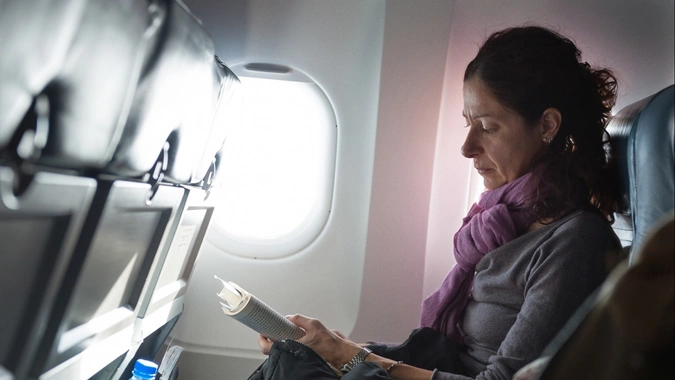The Best Ways to Travel When You Own a Business

Entrepreneurs wear many hats. Besides working as a CEO, they often handle marketing, sales, and customer service. As a result, traveling—whether for work or pleasure—can be challenging when an entire business relies on a single person.
Fortunately, with proper planning and the right tech tools, you can travel with ease. Read on for tips and tricks for traveling as a business owner.
Choose the best time to travel
Many industries see seasonal ups and downs. As a result, planning your trip around seasonal trends can make this experience less stressful.
On top of sticking to slow seasons, you should avoid traveling during business events, like product launches or new customer acquisitions. That way, you can remain present during essential business ventures.
That said, it’s best to be flexible with your travel dates, so be ready to cancel or delay your trip at the last minute if something comes up. Ultimately, having a plan B in place and accepting expecting the unexpected will make traveling less stressful.
Accessing your work
Thanks to 21st-century tech, accessing your work remotely is easier than ever. However, business apps and other tools may be more difficult to download without proper planning.
Digital mailbox
While digital communications have taken over the business world, many organizations still rely on snail mail for processes involving invoicing or shipping packages.
Fortunately, you can stay on top of essential shipments with a digital mailbox available everywhere. Or, consider setting up a physical address to receive mail and packages while you’re away.
Besides preventing theft, this service allows access to your mail remotely via scans. From there, you can choose to have letters and packages forwarded to a temporary address or pick them up later.
Internet connection
You’ll also need a reliable connection to use business apps remotely. To avoid roaming charges and slow mobile connection speeds, it’s best to look for accommodations that include a fast and reliable Wi-Fi connection. If your hotel doesn’t have a secure Wi-Fi network, look for a coworking space instead.
Project management tools
For projects that require collaboration, think about using an online project management tool with coworking features. For instance, some tools designed for remote work let you share documents and keep others up to date regarding your progress.
Virtual communication
Between cloud-based business apps, email, and Zoom calls, you should be able to perform most of your usual tasks remotely.
Here are a few tips to help you stay connected during your trip:
- Invest in a portable power pack to keep your phone and laptop charged at all times.
- Consider purchasing a physical hotspot instead of using your phone’s built-in hotspot to reduce susceptibility to cyberattacks.
- Note that you might be unable to access some systems and business apps abroad as some cybersecurity tools block unusual logins, including foreign IP addresses.
- Review the perks with your credit card before leaving to access airport amenities or discounted rates.
Set communication boundaries
If you want to limit interruptions during a leisure trip, you can designate a timeframe during which partners or employees can contact you. Ask everyone to avoid reaching out to you outside of this timeframe unless there is an emergency.
Security
Don’t overlook security when traveling and working remotely. Unfortunately, public Wi-Fi networks are risky and can leave you prone to breaches and information theft.
A VPN is an excellent way to protect online activities from potential attackers. You should also be aware of your surroundings and avoid working in public spaces if you have to enter credentials or access sensitive information.
Take advantage of automation
Automation tools are allowing businesses to streamline a wide range of tasks, allowing workers to save time and focus on more critical items on their long to-do lists.
Automation is also a valuable tool if you need some time off. Though you can’t automate every aspect of your business, you can use automation to improve communication with employees and customers while you’re away using the following tips:
- Set up autoresponders that send automated responses to non-critical emails that don’t require your immediate attention.
- If you’re going on a road trip, use autoresponders to automate text and call responses while driving.
- Automated payments can help you streamline essential tasks, such as paying invoices while away.
- Automate marketing campaigns, billing, thanking customers for their purchases, and more.
Put someone you trust in charge
If you plan to be away for an extended period, designate a trusted individual who can take over important tasks. That said, don’t hesitate to delegate tasks to more than one employee.
Customers and employees can turn to the person you put in charge if they run into a problem when you’re gone. This person can then decide to escalate the issue and reach out to you or handle it independently.
To maintain consistency and avoid hiccups, you can schedule check-ins to keep up with business activities. Just make sure everyone knows who to contact during your absence.
Learn to prioritize
You can’t expect to spend your entire day working while traveling. However, you can keep your business running without disrupting your vacation by prioritizing projects and delegating tasks.
Though delegating authority to someone you trust will reduce your workload, sometimes a complete change isn’t possible. In that case, you’ll need to slow down or temporarily stop some business activities during your trip.
For instance, most eCommerce platforms allow you to put your online store on hold for a few days, enabling you to set sale holds or adjust shipping information to reflect delays.
You should also delay activities such as seeking new prospects, developing new products, or launching new marketing campaigns until you return. Additionally, the four-day workweek model can be an excellent option to explore if you want to limit your time working during your trip.
Wrap up
With proper planning, it’s possible to travel while limiting the impact on your business. Using tools like digital mailboxes, cloud-based business apps, or video calls can help you stay connected and involved with your key business activities.




